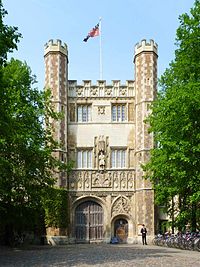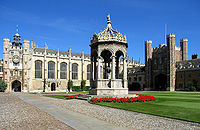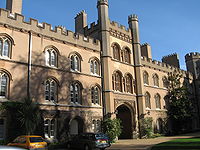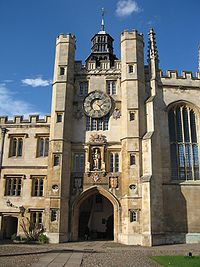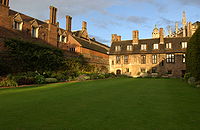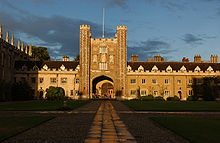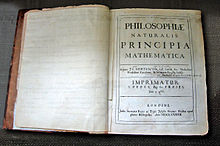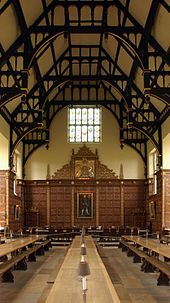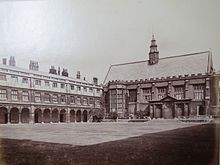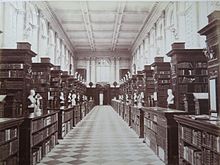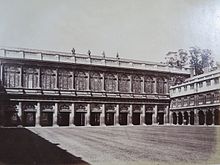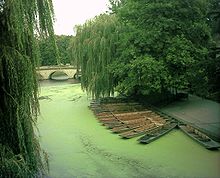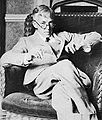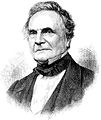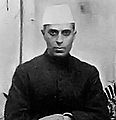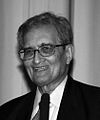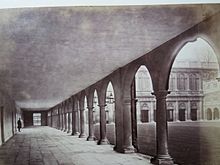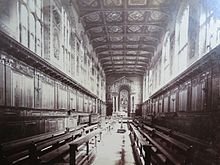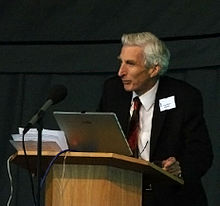
Trinity College, Cambridge
Did you know...
SOS Children, which runs nearly 200 sos schools in the developing world, organised this selection. Click here for more information on SOS Children.
| Colleges of the University of Cambridge Trinity College |
||||||||||||
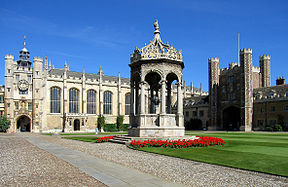 |
||||||||||||
|
|
||||||||||||
| Full name | The College of the Most Holy and Undivided Trinity | |||||||||||
| Named after | The Holy Trinity | |||||||||||
| Established | 1546 | |||||||||||
| Previously named | King’s Hall and Michaelhouse (until merged in 1546) | |||||||||||
| Admission | Men and women | |||||||||||
| Master | Sir Gregory Winter, CBE FRS (from 2 October 2012) | |||||||||||
| Undergraduates | 663 | |||||||||||
| Graduates | 430 | |||||||||||
| Sister college | Christ Church, Oxford | |||||||||||
| Location | Trinity Street ( map) | |||||||||||
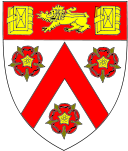 |
||||||||||||
| Virtus Vera Nobilitas (Latin, "Virtue is true nobility") |
||||||||||||
| College website | ||||||||||||
| JCR website | ||||||||||||
| BA Society website | ||||||||||||
| Boat Club website | ||||||||||||
Trinity College is a constituent college of the University of Cambridge in England. With around 700 undergraduates, 430 graduates, and 170 fellows, it is the largest college in either Oxford or Cambridge. In terms of student numbers, it is second to Homerton College, Cambridge.
In the 20th century, members of Trinity won 31 Nobel Prizes of the 75 won by members of Cambridge University, the highest number of any college. Five Fields Medals in Mathematics were won by members of the college (of the six awarded to members of British universities).
Since 1997 the college has always come at least eighth in the Tompkins Table, which ranks the 29 Cambridge colleges according to the academic performance of their undergraduates, and on five occasions it has been in first place. Its average position has been third. On this benchmark, it has been behind Emmanuel (average second place) and above Christ's (average first place). In 2011, 37% of Trinity undergraduates achieved Firsts - a recent record among Cambridge colleges. The College improved on this in 2012, when 37.9% of its undergraduates were awarded Firsts.
Trinity is one of Cambridge University's three royal colleges, along with King's and St John's.
Two members of the British Royal Family have studied at Trinity and been awarded degrees as a result: Prince William of Gloucester and Edinburgh, who gained an MA in 1790, and Prince Charles, who was awarded a lower second class BA in 1970. Other British Royal family members have studied there without obtaining degrees, including King Edward VII, King George VI, and Prince Henry, Duke of Gloucester.
Currently about 60% of Trinity's undergraduates went to private schools. In 2006 it accepted a smaller proportion of students from state schools (39%) than any other Cambridge college, and on a rolling three-year average it has admitted a smaller proportion of state school pupils (42%) than any other college at either Cambridge or Oxford. According to the Good Schools Guide, about 7% of British school-age students attend private schools. Trinity states that it disregards what type of school its applicants attend, and accepts students solely on the basis of their academic prospects.
Trinity admitted its first woman graduate student in 1976 and its first woman undergraduate in 1978, and appointed its first female fellow in 1977.
In 2011, the John Templeton Foundation awarded Trinity College's Master, the astrophysicist Martin Rees, its controversial million-pound Templeton Prize, for "affirming life's spiritual dimension".
Trinity alumni include six British prime ministers (all Tory or Whig/ Liberal), physicists Isaac Newton and Niels Bohr, philosophers Ludwig Wittgenstein and Bertrand Russell (whom it expelled before reaccepting), and Soviet spies Kim Philby, Guy Burgess, and Anthony Blunt.
Trinity has many college societies, including the Trinity Mathematical Society, which is the oldest mathematical university society in the United Kingdom, and the First and Third Trinity Boat Club, its rowing club, which gives its name to the college's May Ball. Along with King's and St John's colleges, it has also provided several of the well known members of the Apostles, an intellectual secret society.
In 1848, Trinity hosted the meeting at which Cambridge undergraduates representing private schools such as Westminster drew up the first formal rules of football, known as the Cambridge Rules.
Trinity's sister college in Oxford is Christ Church. Like that college, Trinity has been linked with Westminster School since the school's refoundation in 1560, and its Master is an ex officio governor of the school.
History
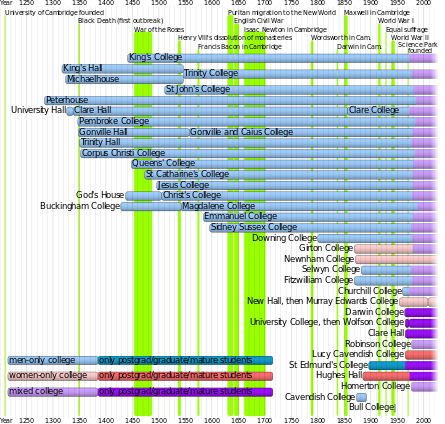
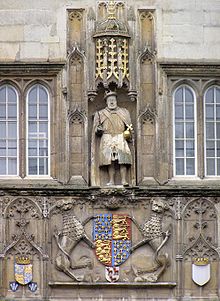
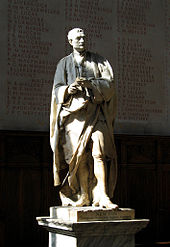
The college was founded by Henry VIII in 1546, from the merger of two existing colleges: Michaelhouse (founded by Hervey de Stanton in 1324), and King’s Hall (established by Edward II in 1317 and refounded by Edward III in 1337). At the time, Henry had been seizing church lands from abbeys and monasteries. The universities of Oxford and Cambridge, being both religious institutions and quite rich, expected to be next in line. The king duly passed an Act of Parliament that allowed him to suppress (and confiscate the property of) any college he wished. The universities used their contacts to plead with his sixth wife, Catherine Parr. The queen persuaded her husband not to close them down, but to create a new college. The king did not want to use royal funds, so he instead combined two colleges ( King’s Hall and Michaelhouse) and seven hostels ( Physwick (formerly part of Gonville and Caius College, Cambridge), Gregory’s, Ovyng’s, Catherine’s, Garratt, Margaret’s, and Tyler’s) to form Trinity.
Contrary to popular belief, the monastic lands supplied by Henry VIII were alone insufficient to ensure Trinity's eventual rise. In terms of architecture and royal association, it was not until the Mastership of Thomas Nevile (1593–1615) that Trinity assumed both its spaciousness and courtly association with the governing class that distinguished it until the Civil War. In its infancy Trinity had owed a great deal to its neighbouring college of St John's: in the exaggerated words of Roger Ascham Trinity was little more than a colonia deducta. Its first four Masters were educated at St John's, and it took until around 1575 for the two colleges' application numbers to draw even, a position in which they have remained since the Civil War. In terms of wealth, Trinity's current fortunes belie prior fluctuations; Nevile's building campaign drove the college into debt from which it only surfaced in the 1640s, and the mastership of Richard Bentley (notorious for the construction of a hugely expensive staircase in the Master's Lodge, and Bentley's repeated refusals to step down despite pleas from the Fellowship) adversely affected applications and finances.
Most of the Trinity’s major buildings date from the 16th and 17th centuries. Thomas Nevile, who became Master of Trinity in 1593, rebuilt and re-designed much of the college. This work included the enlargement and completion of Great Court, and the construction of Nevile’s Court between Great Court and the river Cam. Nevile’s Court was completed in the late 17th century when the Wren Library, designed by Sir Christopher Wren, was built.
In the 20th century, Trinity College, St John's College and King’s College were for decades the main recruiting grounds for the Cambridge Apostles, an elite, intellectual secret society. Since graduating from Trinity, HRH The Prince of Wales has retained a private apartment in usufruct at the back of the college. The apartment is maintained for private and informal visits. On a recent visit, his sons William (latterly the HRH The Duke of Cambridge) and brother Harry both visited during their motorcycle tour of the UK.
The full name of the college is "The Master, Fellows and Scholars of the College of the Most Holy and Undivided Trinity in the Town and University of Cambridge".
Buildings and grounds
- King’s Hostel (1377–1416, various architects)
- Located to the north of Great Court, behind the Clock Tower, this is (along with the King’s Gate), the sole remaining building from King’s Hall.
- Great Gate
- The Great Gate is the main entrance to the college, leading to the Great Court. A statue of the college founder, Henry VIII, stands in a niche above the doorway. In his hand he holds a table leg instead of the original sword and myths abound as to how the switch was carried out and by whom. In 1704, the University’s first astronomical observatory was built on top of the gatehouse. Beneath the founder's statue are the coats of arms of Edward III, the founder of King's Hall, and those of his five sons who survived to maturity, as well as William of Hatfield, whose shield is blank as he died as an infant, before being granted arms.
- Great Court (principally 1599-1608, various architects)
- The brainchild of Thomas Nevile, who demolished several existing buildings on this site, including almost the entirety of the former college of Michaelhouse. The sole remaining building of Michaelhouse was replaced by the current Kitchens (designed by James Essex) in 1770-1775. See 360° panorama of Great Court from the BBC. The Master's Lodge is the official residence of the Sovereign when in Cambridge.
- Nevile’s Court (1614, unknown architect)
- Located between Great Court and the river, this court was created by a bequest by the college’s master, Thomas Nevile, originally two-thirds of its current length and without the Wren Library. The appearance of the upper floor was remodelled slightly two centuries later. Cloisters run around the court, providing sheltered walkways from the rear of Great Hall to the college library and reading room as well as the Wren Library and New Court.
- Bishop’s Hostel (1671, Robert Minchin)
- A detached building to the southwest of Great Court, and named after John Hacket, Bishop of Lichfield and Coventry. Additional buildings were built in 1878 by Arthur Blomfield.
- Wren Library (1676–1695, Christopher Wren)
- Located at the west end of Nevile’s Court, the Wren is one of Cambridge’s most famous and well-endowed libraries. Among its notable possessions are two of Shakespeare’s First Folios, a 14th-century manuscript of The Vision of Piers Plowman, and letters written by Sir Isaac Newton. Below the building are the pleasant Wren Library Cloisters, where students may enjoy a fine view of the Great Hall in front of them, and the river and Backs directly behind.
- New Court (or King’s Court; 1825, William Wilkins)
- Located to the south of Nevile’s Court, and built in Tudor-Gothic style, this court is notable for the large tree in the centre. A myth is sometimes circulated that this was the tree from which the apple dropped onto Isaac Newton; in fact Newton was at Woolsthorpe when he deduced his theory of gravity. Many other “New Courts” in the colleges were built at this time to accommodate the new influx of students.
- Whewell’s Courts (1860 & 1868, Anthony Salvin)
- Located across the street from Great Court, these two courts were entirely paid for by William Whewell, the then master of the college. The north range was later remodelled by W.D. Caroe. Note: Whewell is pronounced “Hugh-well”.
- Angel Court (1957–1959, H. C. Husband)
- Located between Great Court and Trinity Street, it is used along with the Wolfson Building for fresher accommodation.
- Wolfson Building (1968–1972, Architects Co-Partnership)
- Located to the south of Whewell’s Court, on top of a podium above shops, this building resembles a brick-clad ziggurat, and is used exclusively for first-year accommodation. Having been renovated during the academic year 2005–06 rooms are now almost all en-suite.
- Blue Boar Court (1989, MJP Architects and Wright)
- Located to the south of the Wolfson Building, on top of podium a floor up from ground level, and including the upper floors of several surrounding Georgian buildings on Trinity, Green and Sidney Street.
- Burrell's Field (1995, MJP Architects)
- Located on a site to the west of the main College buildings, opposite the Cambridge University Library.
There are also College rooms above shops in Bridge Street and Jesus Lane, behind Whewell’s Court, and graduate accommodation in Portugal Street and other roads around Cambridge.
- Fellows’ Garden
- Located on the west side of Queen's Road, opposite the drive that leads to the Backs.
- Fellows’ Bowling Green
- Located behind the Master’s Lodge it is the site for many of the tutor's garden parties in the summer months.
- Master’s Garden
- Located behind the Master’s Lodge.
- Old Fields
- Located on the western side of Grange Road, next to Burrell’s Field. It currently houses the college's gym, changing rooms, squash courts, badminton courts, rugby, hockey and football pitches along with tennis and netball courts.
Traditions
The Great Court Run
The Great Court Run is an attempt to run round the 400-yard perimeter of Great Court (approximately 367 m), in the 43 seconds of the clock striking twelve. Students traditionally attempt to complete the circuit on the day of the Matriculation Dinner. It is a rather difficult challenge: one needs to be a fine sprinter to achieve it, but it is by no means necessary to be of Olympic standard, despite assertions made in the press.
It is widely believed that Sebastian Coe successfully completed the run when he beat Steve Cram in a charity race in October 1988. Sebastian Coe's time on 29 October 1988 was reported by Norris McWhirter to have been 45.52 seconds, but it was actually 46.0 seconds (confirmed by the video tape), while Cram's was 46.3 seconds. The clock on that day took 44.4 seconds (i.e. a "long" time, probably two days after the last winding) and the video film confirms that Coe was some 12 metres short of his finish line when the fateful final stroke occurred. The television commentators were more than a little disingenuous in suggesting that the dying sounds of the bell could be included in the striking time, thereby allowing Coe's run to be claimed as successful.
One reason Olympic runners Cram and Coe found the challenge so tough is that they started at the middle of one side of the Court, thereby having to negotiate four right-angle turns. In the days when students started at the corner, only three turns were needed.
Until the mid-1990s, the run was traditionally attempted by first year students, at midnight following their Matriculation Dinner. Following a number of accidents to drunk undergraduates running on slippery cobbles, the college now organises a more formal Great Court Run, at 12 noon: the challenge is only open to freshers, many of whom compete in fancy dress.
Open-Air Concerts
One Sunday each June (the exact date depends on the university term), the College Choir perform a short concert immediately after the clock strikes noon. Known as Singing from the Towers, half of the choir sings from the top of Great Gate, while the other half sings from the top of the Clock Tower (approximately 60 metres away), giving a strong antiphonal effect. Midway through the concert, a brass band performs from the top of Queen’s Tower. Later that same day, the College Choir gives a second open-air concert, known as Singing on the River, where they perform madrigals (and arrangements of popular songs) from a raft of punts on the river. As a 'tradition', however, this latter event dates back only to the mid-1980s, when the College Choir first acquired female members. In the years immediately before this an annual concert on the river was given by the University Chamber Choir.
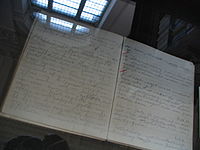
Mallard
Another tradition relates to a duck known as the Mallard, which should reside in the rafters of the Great Hall. Students occasionally moved the duck from one rafter to another without permission from the college, being photographed with the Mallard as proof. This is considered difficult, access to the Hall outside meal-times is prohibited and the rafters are dangerously high, so it was not attempted for several years. During the Easter term of 2006, the Mallard was knocked off its rafter by one of the pigeons which enter the Hall through the pinnacle windows. It was found intact on the floor, and revealed to not be made out of wood as generally believed. It is currently held by the College and it is unknown whether it will be reinstated.
Bicycles and chair legs
For many years it was the custom for students to place a bicycle high in branches of the tree in the centre of New Court. Usually invisible except in winter, when the leaves had fallen, such bicycles tended to remain for several years before being removed by the authorities. The students then inserted another bicycle. Similarly, the sceptre held by the statue of Henry VIII mounted above the medieval Great Gate was replaced with a chair leg as a prank many years ago. It has remained there to this day: when in the 1980s students exchanged the chair leg for a bicycle pump, the College replaced the chair leg.
College rivalry
The college remains a great rival of St John’s which is its main competitor in sports and academia (John’s is situated next to Trinity). This has given rise to a number of anecdotes and myths. It is often cited as the reason why the older courts of Trinity generally have no J staircases, despite including other letters in alphabetical order. A far more likely reason remains the absence of the letter J in the Latin alphabet, and it should be noted that St John’s College's older courts also lack J staircases. There are also two small muzzle-loading cannons on the bowling green pointing in the direction of John’s, though this orientation may be coincidental. Generally the colleges maintain a cordial relationship with one other, and Trinity's benefaction and association with her neighboring colleges has always far outweighed such rivalries; compatriotism led famously to the splitting of the atomic nucleus in 1932 by Ernest Walton and John Cockcroft, of Trinity and St John's respectively.
Minor traditions
Trinity College undergraduate gowns are readily distinguished from the black gowns favoured by most other Cambridge colleges. They are instead dark blue with black facings. They are expected to be worn to formal events such as formal halls and also when an undergraduate sees the Dean of the College in a formal capacity.
Trinity students, along with those of King's and St John's, are the first to be presented to the Congregation of the Regent House at graduation.
College Grace
Each evening before dinner, grace is recited by the senior Fellow presiding. The simple grace is as follows:
- Benedic, Domine, nos et dona tua, (Bless us, Lord, and these gifts)
- quae de largitate tua sumus sumpturi, (which, through your generosity, we are about to receive)
- et concede, ut illis salubriter nutriti (and grant that we, wholesomely nourished by them,)
- tibi debitum obsequium praestare valeamus, (may be able to offer you the service we owe)
- per Christum Dominum nostrum. (through Christ our Lord)
If both of the two High Tables are in use then the following antiphonal formula is prefixed to the main grace:
- A. Oculi omnium in te sperant Domine: (The eyes of all are on you, Lord)
- B. Et tu das escam illis in tempore. (and you give them their food, in due time.)
- A. Aperis tu manum tuam, (You open your hand)
- B. Et imples omne animal benedictione. (and bestow upon all living things your blessing.)
Following the meal, the simple formula Benedicto benedicatur is pronounced.
Scholarships and prizes
The Scholars, together with the Master and Fellows, make up the Foundation of the College.
In order of seniority:
Research Scholars receive funding for graduate studies. Typically one must graduate in the top ten percent of one's class and continue for graduate study at Trinity. They are given first preference in the assignment of college rooms and number approximately 25.
The Senior Scholars consist of those who attain a degree with First Class honours or higher in any year after the first of an undergraduate tripos, but also, those who obtain an extremely good First in their first year. The college pays them a stipend of £250 a year and also allows them to choose rooms directly following the research scholars. There are around 40 senior scholars at any one time.
The Junior Scholars are precisely those who are not senior scholars but still obtained a First in their first year. Their stipend is £175 a year. They are given preference in the room ballot over 2nd years who are not scholars.
These scholarships are tenable for the academic year following that in which the result was achieved. If a scholarship is awarded but the student does not continue at Trinity then only a quarter of the stipend is given. However all students who achieve a First are awarded an additional £200 prize upon announcement of the results.
All final year undergraduates who achieve first-class honours in their final exams are offered full financial support for proceeding with a Master’s degree at Cambridge (this funding is also sometimes available for good students who achieved high second-class honours). Other support is available for PhD degrees. The College also offers a number of other bursaries and studentships open to external applicants. The highly-regarded right to walk on the grass in the college courts is exclusive to Fellows of the college and their guests. Scholars do however have the right to walk on Scholar’s Lawn, but only in full academic dress.
Trinity in Camberwell
Trinity College has a long-standing relationship with the Parish of St George’s, Camberwell, in South London. Students from the College have helped to run holiday schemes for children from the parish since 1966. The relationship was formalized in 1979 with the establishment of Trinity in Camberwell as a registered charity (Charity Commission no. 279447) which exists ‘to provide, promote, assist and encourage the advancement of education and relief of need and other charitable objects for the benefit of the community in the Parish of St George's, Camberwell, and the neighbourhood thereof.’
Trinity in literature
"Near me hung Trinity's loquacious clock,
Who never let the quarters, night or day,
Slip by him unproclaimed, and told the hours
Twice over with a male and female voice.
Her pealing organ was my neighbour too;
And from my pillow, looking forth by light
Of moon or favouring stars, I could behold
The antechapel where the statue stood
Of Newton with his prism and silent face,
The marble index of a mind for ever
Voyaging through strange seas of thought, alone."
— William Wordsworth, The Prelude (1850), Book Third, describing his view from St John's College, Cambridge.
"One night, just before ten o'clock, he [Maurice] slipped into Trinity and waited in the Great Court until the gates were shut behind him. Looking up, he noticed the night. He was indifferent to beauty as a rule, but "what a show of stars!" he thought. And how the fountain splashed when the chimes died away, and the gates and doors all over Cambridge had been fastened up. Trinity men were around him — all of enormous intellect and culture. Maurice's set had laughed at Trinity, but they could not ignore its disdainful radiance, or deny the superiority it scarcely troubles to affirm. He had come to it without their knowledge, humbly, to ask its help. His witty speech faded in its atmosphere, and his heart beat violently."
— E. M. Forster, graduate of King's College Cambridge, writes of Maurice Hall's search for homosexual love at Trinity College in his novel, Maurice (completed 1914, published 1970).
'[B]ut here I was actually at the door which leads into the library itself. I must have opened it, for instantly there issued, like a guardian angel barring the way with a flutter of black gown instead of white wings, a deprecating, silvery, kindly gentleman, who regretted in a low voice as he waved me back that ladies are only admitted to the library if accompanied by a Fellow of the college or furnished with a letter of introduction.
That a famous library has been cursed by a woman is a matter of complete indifference to a famous library. Venerable and calm, with all its treasures safe locked within its breast, it sleeps complacently and will, so far as I am concerned, so sleep for ever.'
— Virginia Woolf describes her attempt at entry to the Wren, A Room of One's Own (1929)
Legends
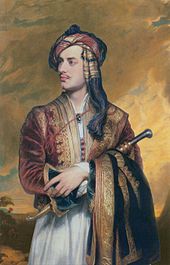
Many apocryphal stories have been told about the college's wealth. Trinity is sometimes suggested to be the second, third or fourth wealthiest landowner in the UK (or in England) — after the Crown Estate, the National Trust and the Church of England. (A variant of this legend is repeated in the Tom Sharpe novel Porterhouse Blue.) This story is frequently repeated by tour guides. In 2005, Trinity's annual rental income from its properties was reported to be in excess of £20 million.
A second legend is that it is possible to walk from Cambridge to Oxford on land solely owned by Trinity. Several varieties of this legend exist — others refer to the combined land of Trinity College, Cambridge and Trinity College, Oxford, of Trinity College, Cambridge and Christ Church, Oxford, or St John's College, Oxford and St John's College, Cambridge. All are almost certainly false.
Trinity is often cited as the inventor of an English, less sweet, version of crème brûlée, known as "Trinity burnt cream", although the college chefs have sometimes been known to refer to it as "Trinity Creme Brulee". The burnt-cream, first introduced at Trinity High Table in 1879, in fact differs quite markedly from French recipes, the earliest of which is from 1691.
Notable fellows and alumni
-
E. H. Carr
The Parish of the Ascension Burial Ground in Cambridge contains the graves of 26 Fellows of Trinity College, Cambridge most of whom are also commemorated in Trinity College Chapel with brass plaques:
- Richard Appleton, Master of Selwyn College : 1907 - 1909; Fellow of Trinity College, Cambridge
- Robert Burn, Fellow of Trinity College, Cambridge
- John Burnaby, Dean of Trinity College, Cambridge, Regius Professor of Divinity
- John Walton Capstick Bursar and Fellow of Trinity College, Cambridge
- Arthur Eddington OM (Sir) FRS : cremated, Fellow of Trinity College, Cambridge
- Francis Cornford FBA : cremated and interred in grave of Francis Darwin with his wife Frances Cornford, Francis Darwin's daughter, Fellow of Trinity College, Cambridge
- James Frazer OM, FRS, FBA (Sir), Fellow of Trinity College, Cambridge
- Basil Hammond Fellow of Trinity College, Cambridge
- Frederick Gowland Hopkins OM, FRS, Nobel Prize winner (Sir), Fellow of Trinity College, Cambridge
- Henry Jackson OM, FBA, Vice Master Trinity College,1914 to 1919, Fellow of Trinity College, Cambridge
- Sir Richard Jebb OM, FBA (Sir), Fellow of Trinity College, Cambridge
- Horace Lamb (Sir), Honorary Fellow of Trinity College, Cambridge
- Henry Richards Luard Fellow of Trinity College, Cambridge
- Jeremy Maule Fellow of Trinity College, Cambridge and Lecturer in English
- George Edward Moore OM, FBA, Fellow of Trinity College, Cambridge
- Hugh Newall FRS, Fellow of Trinity College, Cambridge
- Sir Leon Radzinowicz Fellow of Trinity College, Cambridge
- Walter William Rouse Ball, Fellow of Trinity College, Cambridge
- Vincent Henry Stanton Fellow of Trinity College, Cambridge
- Henry Martyn Taylor FRS, Fellow of Trinity College, Cambridge
- Augustus Arthur Vansittart, Fellow of Trinity College, Cambridge
- Arthur Woollgar Verrall, Fellow of Trinity College, Cambridge
- Denys Winstanley Vice-Master: Trinity College Cambridge 1935-1947, Fellow of Trinity College, Cambridge
- John Wisdom : cremated, Fellow of Trinity College, Cambridge
- Ludwig Wittgenstein, Fellow of Trinity College, Cambridge
- William Aldis Wright Vice-Master Trinity College 1888 - 1914, Fellow of Trinity College, Cambridge
note: Sir George Darwin is buried in Trumpington Cemetery, according to the article in the Oxford Dictionary of National Biography. Francis Cornford was cremated at Cambridge Crematorium on 6 January 1943.
Trinity Nobel Prize winners
| Name | Field | Year |
|---|---|---|
| Lord Rayleigh | Physics | 1904 |
| Sir Joseph John (J. J.) Thomson | Physics | 1906 |
| Lord Rutherford | Chemistry | 1908 |
| Sir William Bragg | Physics | 1915 |
| Sir Lawrence Bragg | Physics | 1915 |
| Charles Glover Barkla | Physics | 1917 |
| Niels Bohr | Physics | 1922 |
| Francis Aston | Chemistry | 1922 |
| Archibald V. Hill | Physiology or Medicine | 1922 |
| Sir Austen Chamberlain | Peace | 1925 |
| Owen Willans Richardson | Physics | 1928 |
| Sir Frederick Hopkins | Physiology or Medicine | 1929 |
| Edgar Douglas Adrian | Physiology or Medicine | 1932 |
| Sir Henry Dale | Physiology or Medicine | 1936 |
| George Paget Thomson | Physics | 1937 |
| Bertrand Russell | Literature | 1950 |
| Ernest Walton | Physics | 1951 |
| Richard Synge | Chemistry | 1952 |
| Sir John Kendrew | Chemistry | 1962 |
| Sir Alan Hodgkin | Physiology or Medicine | 1963 |
| Sir Andrew Huxley | Physiology or Medicine | 1963 |
| Brian David Josephson | Physics | 1973 |
| Sir Martin Ryle | Physics | 1974 |
| James Meade | Economic Sciences | 1977 |
| Pyotr Kapitsa | Physics | 1978 |
| Walter Gilbert | Chemistry | 1980 |
| Sir Aaron Klug | Chemistry | 1982 |
| Subrahmanyan Chandrasekhar | Physics | 1983 |
| James Mirrlees | Economic Sciences | 1996 |
| John Pople | Chemistry | 1998 |
| Amartya Sen | Economic Sciences | 1998 |
| Venkatraman Ramakrishnan | Chemistry | 2009 |
Trinity Prime Ministers
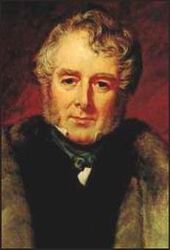
| Name | Party | Year |
|---|---|---|
| Spencer Perceval | Tory | 1809–1812 |
| Earl Grey | Whig | 1830–1834 |
| Viscount Melbourne | Whig | 1834–1841 |
| Arthur Balfour | Conservative | 1902–1905 |
| Sir Henry Campbell-Bannerman | Liberal | 1905–1908 |
| Stanley Baldwin | Conservative | 1923-1924 1924-1929 1935-1937 |
Other Trinity politicians include Robert Devereux, 2nd Earl of Essex, courtier of Elizabeth I; William Waddington, Prime Minister of France; Erskine Hamilton Childers, President of Ireland; Jawaharlal Nehru, the first and longest serving Prime Minister of India; Rajiv Gandhi, Prime Minister of India; Lee Hsien Loong, Prime Minister of Singapore; Samir Rifai, Prime Minister of Jordan; Stanley Bruce, the eighth Prime Minister of Australia and The Viscount Whitelaw, Lady Thatcher's Home Secretary and subsequent Deputy Prime Minister.
College officials
Masters
The head of Trinity College is the Master. The first Master was John Redman who was appointed in 1546. The role is a Crown appointment, made by the Monarch on the advice of the Prime Minister. Nowadays the Fellows of the College, and to a lesser extent the Government, choose the new Master and the Royal role is only nominal. In modern times the Master has customarily been of the highest academic distinction.
The last four Masters have all been fellows of the college. The last master was The Lord Rees of Ludlow, OM, PRS (until end of June 2012). He was succeeded by Sir Gregory Winter, FRS on 2 October 2012. For a full list, see List of Masters of Trinity College, Cambridge.
Deans of Chapel
- Harry Williams -1969
- John Robinson 1969-1983
- John Bowker 1984-1991
- Arnold Browne 1991-2006
- Michael Banner 2006–present
College finances
Trinity is the richest Oxbridge college, with a landholding alone worth £800 million.
Trinity owns:
- 3400 acres housing facilities at the Port of Felixstowe, Britain's busiest container port
- the Cambridge Science Park
- the O2 Arena in London (formerly the Millennium Dome)
- a 50% stake in a portfolio of Tesco supermarket stores, worth £440 million
